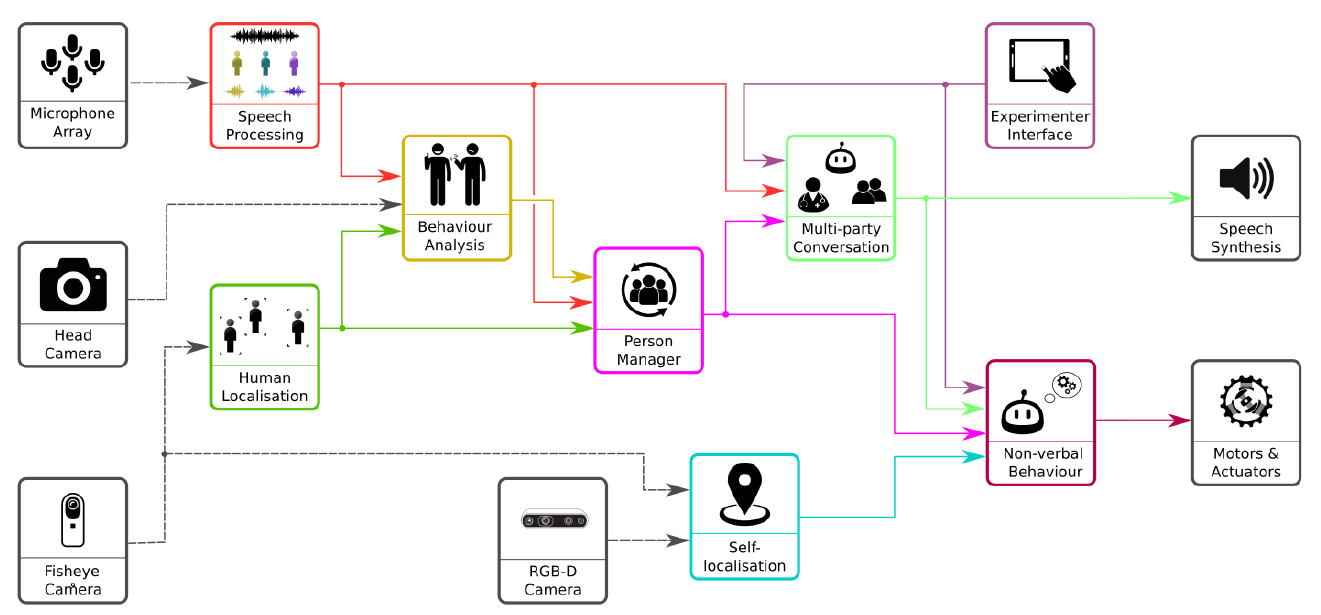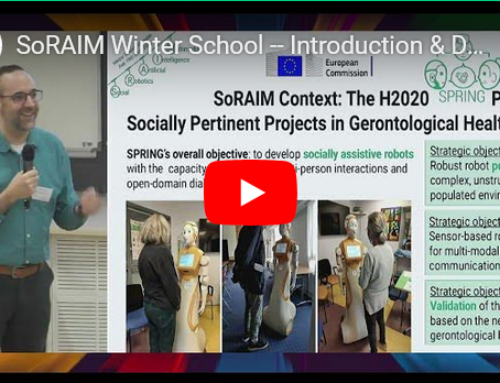We released the final version of the software architecture of the SPRING project on the ARI robot, integrated the software components so as to , to achieve a fully autonomous robot capable of performing the tasks and scenarios defined in the project.
The final architecture comprises:
- 52 SPRING-specific ROS nodes, organised in 8 functional domains (speech processing, behaviour analysis, human localisation, person modeling, self-localisation, multi-party conversation, non-verbal behaviours, user interfaces). (note that these nodes communicate with the functional layers of the PAL ARI robot, which themselves are composed of many additional ROS nodes);
- more that 170 ROS topics, services, and actions connecting these nodes together.

The final architecture of the SPRING robot comprises of 52 ROS nodes, organised in 8 functional domains, and more than 170 ROS topics, services, and actions connecting these nodes together. The architecture is designed to be modular, scalable, and flexible, to allow for easy integration of new components, and to facilitate the development of new behaviours and functionalities. The development of the SPRING architecture has been carried out in an iterative manner, with regular integration and testing cycles, and has followed the principles of the ROS framework and the ROS4HRI standard.
The final architecture of the SPRING robot has evolved significantly over the course of the project, and is now implemented and deployed on the PAL ARI robot. The architecture specification is available at https://gitlab.inria.fr/spring/wp7_ari/spring-architecture while the open-source implementation of the main ROS nodes is publicly available from https://gitlab.inria.fr/spring/ .
Further details on architecture choices are described in Deliverable D7.5 which you can access here.


